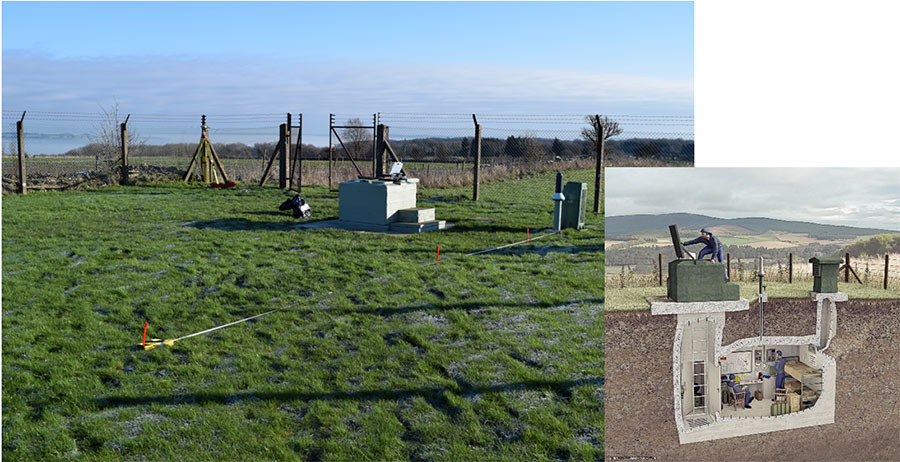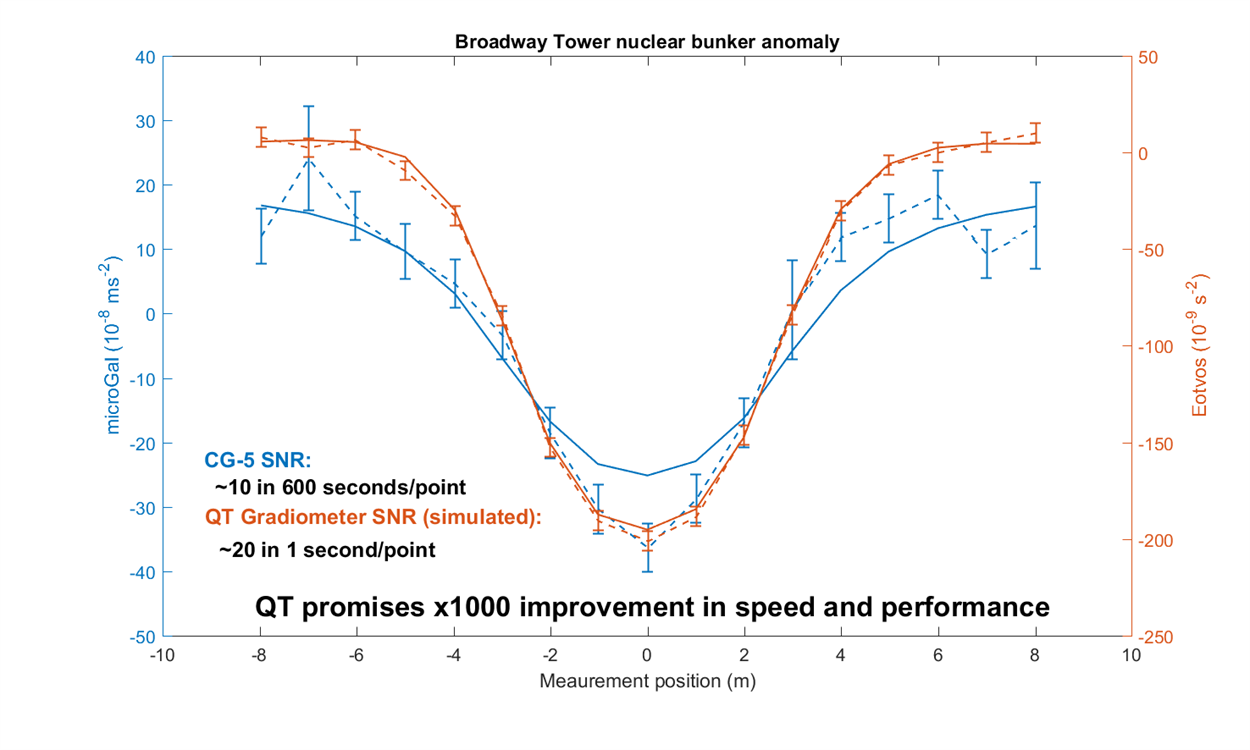Due to the suppression of common mode vibration, atom interferometer (AI) gravity gradiometers have the potential to take measurements in harsh, noisy environments. Along with civil engineering applications, there are many potential applications in the area of defence, ranging the detection of targets such as tunnels, hidden caches or unexploded ordinance, to vehicle navigation using gravity gradient mapping.
 Figure 1: Gravity survey at the Broadway Tower Nuclear Bunker. Inset, cut-through of the underground bunker structure (image c/o Broadway Tower)
Figure 1: Gravity survey at the Broadway Tower Nuclear Bunker. Inset, cut-through of the underground bunker structure (image c/o Broadway Tower)
A terrestrial survey with an AI gradiometer promises to improve on the current state of the art in both measurement speed and precision. A typical gravity survey setup is shown in Figure 1. The classical spring based gravimeter is moved between measurement points, it is stationary at each point for a minimum of five minutes while it averages readings. The exact time spent on each point varies with weather conditions, with exceptionally windy days halting a survey entirely.
 Figure 2: A single line of gravity data was obtained over the centre of the bunker (dashed blue line). The signal was larger than expected from synthetic data obtained using the known Bunker dimensions. The corresponding synthetic gravity gradient signal (solid orange) and synthetic measurements with projected instrument uncertainty (dashed orange) are shown for comparison.
Figure 2: A single line of gravity data was obtained over the centre of the bunker (dashed blue line). The signal was larger than expected from synthetic data obtained using the known Bunker dimensions. The corresponding synthetic gravity gradient signal (solid orange) and synthetic measurements with projected instrument uncertainty (dashed orange) are shown for comparison.
Figure 2 shows the outcome of the classical gravimeter survey, the seventeen measurement points took around ten hours to obtain (i.e. one full working day). Reducing this measurement time substantially is crucial for defence applications where access to a site is often at risk. The rejection of common mode vibration from an AI gradiometer can make big strides towards this goal.